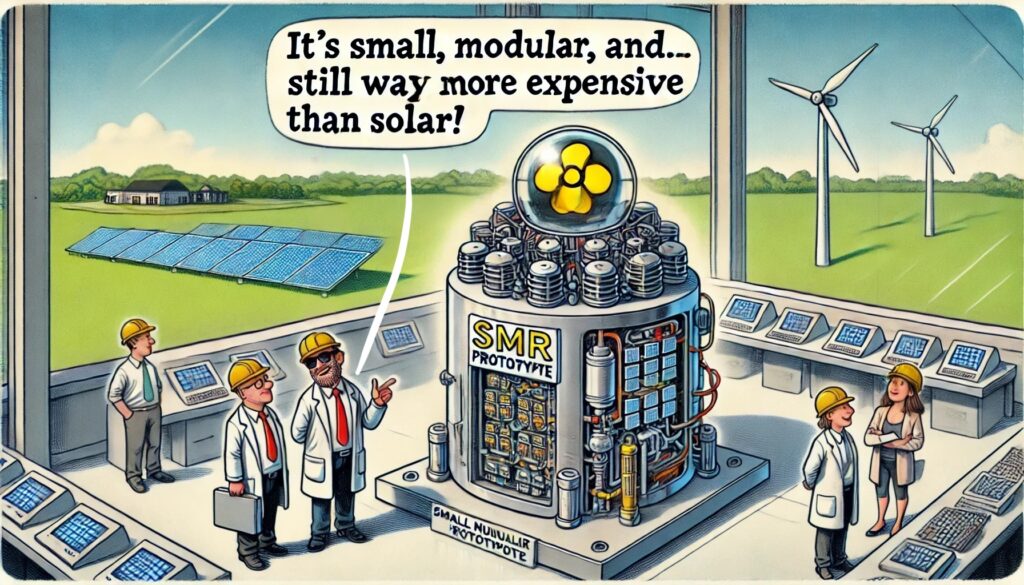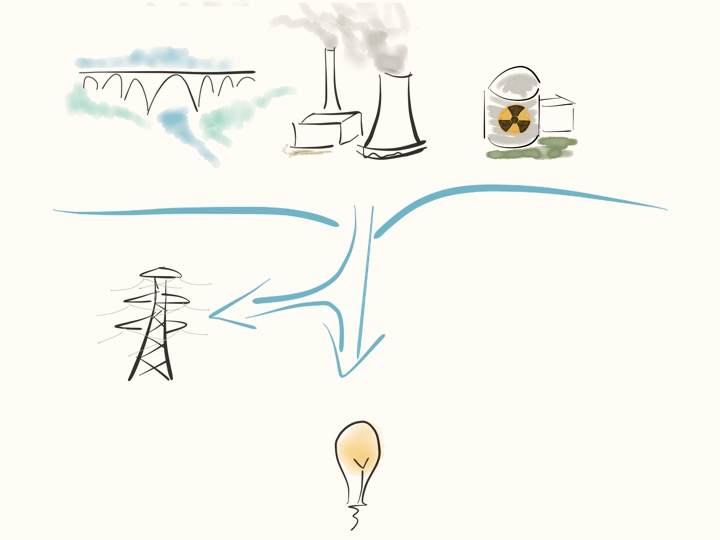
Du monopole au mobile : la leçon de l’iPhone
En 2007, l’iPhone n’était pas simplement un nouveau téléphone. Il a bouleversé le modèle établi des télécommunications. À l’époque, les opérateurs mobiles contrôlaient presque tout : les appareils autorisés, les fonctions activées, les services proposés. Les téléphones étaient verrouillés, bridés, alignés sur la vision de l’opérateur.
Les fabricants traditionnels de téléphones cellulaires, confortablement installés dans un équilibre stable avec les opérateurs, ont aussi fait les frais de l’arrivée de l’iPhone. Leur modèle d’affaires reposait sur des appareils standardisés, conçus selon les exigences des opérateurs, peu évolutifs, mais vendus en masse. L’innovation logicielle n’était pas une priorité, tant que les volumes suivaient.
L’iPhone a mis fin à ce statu quo. Incapables de suivre le virage logiciel et l’émergence de plateformes applicatives, plusieurs géants comme Nokia, BlackBerry ou Motorola ont vu leur position s’effondrer. L’interface intuitive, l’écosystème d’applications et l’intégration verticale d’Apple ont redéfini les attentes des utilisateurs et déplacé le centre de gravité vers l’expérience client. Google, avec Android, a poursuivi dans cette voie avec une approche plus ouverte, mais tout aussi centrée sur l’utilisateur.
L’App Store a consolidé cette révolution. En ouvrant une plateforme aux développeurs tiers, Apple a déclenché une explosion d’innovations. Les applications sont devenues le point d’ancrage de l’expérience numérique. Les opérateurs, autrefois maîtres du contenu, ont été relégués au rôle de simples fournisseurs de connectivité. La valeur s’est déplacée vers les plateformes logicielles et les services.
Pour les constructeurs automobiles, l’enjeu est similaire. Restreindre les usages, garder un contrôle exclusif sur l’expérience ou brider les interactions avec les systèmes énergétiques revient à ignorer une dynamique déjà à l’œuvre. Ceux qui permettront aux utilisateurs de devenir pleinement acteurs d’un nouvel écosystème énergétique, fluide et personnalisable, auront une longueur d’avance.
Le V2G, ou comment redonner du pouvoir aux usagers
Aujourd’hui, un évènement iPhone se prépare dans le monde de l’énergie.
Les véhicules électriques sont des batteries sur roues. Avec le V2G (Vehicle-to-Grid), ils peuvent faire plus que consommer : ils peuvent stocker, redistribuer, équilibrer. L’utilisateur devient acteur du réseau, producteur, gestionnaire, partenaire.
Mais encore faut-il que les constructeurs automobiles le permettent, ce qui est loin d’être la norme. Quelques projets pilotes existent. En Australie, la Nissan Leaf a été testée dans des initiatives comme REVS, mais l’adoption reste marginale, freinée par la complexité réglementaire, les exigences des réseaux et la prudence des constructeurs. D’autres exemples, comme Renault avec Mobilize et The Mobility House en France, ou GM avec PG&E en Californie, relèvent de configurations fermées, limitées à des accords bilatéraux entre un constructeur et un fournisseur d’énergie.
Cela rappelle le monde des téléphones cellulaires avant l’iPhone : des appareils conçus pour des systèmes fermés (plus encore en Amérique du Nord qu’en Europe), verrouillés par des ententes commerciales, et rarement compatibles entre eux. Tant que cette logique perdure, l’innovation à grande échelle — ouverte, interopérable, centrée sur l’utilisateur — ne pourra émerger. Les constructeurs automobiles risquent alors de connaître le sort des géants déchus des équipements de télécoms. Ce sont peut-être, aujourd’hui, les BlackBerry de demain.
Les compagnies d’électricité, historiquement maîtres d’un réseau centralisé, doivent elles aussi s’adapter. Face à des ressources distribuées, mobiles et autonomes, elles devront réinventer leur rôle. Comme les opérateurs télécoms hier, elles devront passer du contrôle à l’orchestration.
Une nouvelle ère énergétique
Ce nouveau système énergétique ne pourra reposer uniquement sur le modèle pavillonnaire — un foyer unifamilial équipé d’un véhicule électrique, de panneaux solaires et, peut-être, d’une batterie résidentielle. Il devra aussi fonctionner dans des environnements urbains denses : immeubles à logements multiples, tours à bureaux, stationnements partagés. Le V2G devra s’y adapter avec des solutions mutualisées, intelligentes et intégrées à la gestion collective de l’énergie.
Tout comme l’iPhone a déclenché une vague d’innovation — applications, nouveaux modèles d’affaires, paiements mobiles — il a aussi transformé toute une industrie. Des fabricants de téléphones ont disparu, incapables de suivre. Parallèlement, les télécoms ont explosé : croissance du trafic de données, diversification des services, émergence de nouveaux acteurs.
Le V2G pourrait provoquer une mutation comparable dans le monde de l’énergie. Et, contrairement à de nombreux programmes dictés par les compagnies d’électricité ou soutenus par des subventions publiques, cette transformation pourrait être portée — et financée — par les consommateurs eux-mêmes, comme ce fut le cas pour l’iPhone. Ce sont les usagers qui, en adoptant massivement ces technologies, pourraient en accélérer l’avènement.
Pour les fabricants automobiles, cela signifie repenser le véhicule comme une plateforme énergétique. Les clients V2G auront souvent des panneaux solaires et voudront maximiser leur autoconsommation, ce qui exige une intégration fluide entre voiture, maison et réseau. Cela implique des fonctions logicielles avancées, des partenariats ouverts, une gestion optimisée des batteries. Ceux qui offriront une expérience fluide, sécuritaire et économique prendront une longueur d’avance. Les premiers fabricants d’automobiles à intégrer le V2G concrètement auront un avantage compétitif décisif, en capturant une part stratégique du marché et en imposant leurs standards.
Pour les compagnies d’électricité, le défi est tout aussi stratégique. Elles devront gérer des millions d’actifs énergétiques mobiles qu’elles ne possèdent pas. Il leur faudra des outils d’orchestration, des modèles tarifaires dynamiques et une capacité d’interaction avec des plateformes tierces. Le V2G accélérera la transition vers un réseau plus décentralisé, plus flexible, plus intelligent.
Des entreprises traditionnelles devront repenser leur modèle. De nouveaux acteurs plus agiles apparaîtront : dans les technologies, les services résidentiels, la gestion de l’énergie.
Comme l’App Store l’a fait pour le mobile, le V2G pourrait ouvrir la voie à des plateformes énergétiques ouvertes. Des tiers viendraient y offrir des services novateurs : optimisation tarifaire, stockage partagé, automatisation domotique, agrégation de batteries. L’utilisateur, d’abord simple consommateur d’électricité, deviendrait le pivot d’un écosystème riche, personnalisé et décentralisé.
Les défis sont nombreux — techniques, réglementaires, culturels — mais le mouvement est lancé. Et comme pour AT&T et Rogers à l’époque, ceux qui s’adapteront tôt pourraient bien en sortir gagnants.














